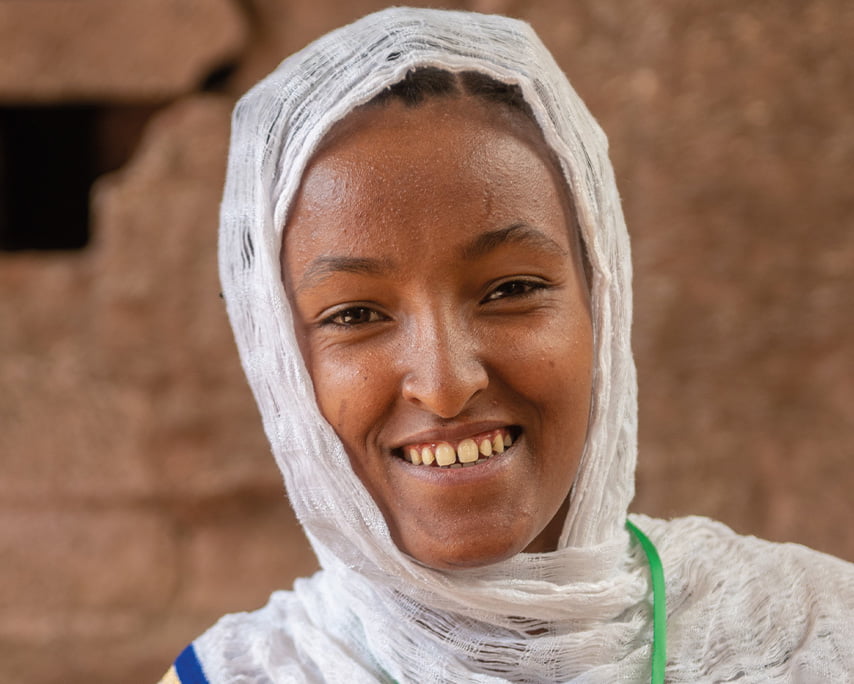An Ethiopian woman outside of the rock hewn monolithic church of Bet Maryam in Lalibela , Ethiopia.
Photo Credit: Edwin Remsberg /VWPics/Universal Images Group via Getty Images
The intentional use of images to enhance communication
Our attention spans are becoming increasingly shorter. With so much content vying for our attention, creating a lasting impression as an organisation is challenging. However, one proven way to make your message stand out is by using a visual narrative.
A visual narrative is a story told through a series of images. In the development and humanitarian space, images are a powerful tool for conveying emotions, ideas and messages in a way that resonates with the different communities an organisation serves. These images are much more effective when the pictures are relevant to your story and convey the right emotions. You must refrain from using stock images as they lack authenticity and often do not fit the message you are trying to convey.
Therefore, you must make sure each image you select contributes to the overall message you are trying to convey. Additionally, because much of the publication work in the non-governmental space is either educative, informative, or for impact purposes, the principles of communication, education, and advocacy are often used to protect the authenticity and authority of the information provided.
Challenges of photo curation
One of the biggest challenges of photo curation is the sheer volume of editorial images most organisations take. It is not uncommon for your organisation to take hundreds or even thousands of photos in a single day. Having such a huge number of images to choose from often makes it difficult to sort through them all and decide which ones to keep and what to discard.
More often than not, tastes and preferences change over time. What may have seemed like a great photo at the time may no longer hold the same value or significance. This makes it challenging to decide which photos to keep.
Finally, photo curation is often a time-consuming and daunting task. It can be overwhelming to go through all of your photos and decide which ones to keep and which ones to delete. This can lead to procrastination and a buildup of photos not curated.
Overcoming the challenges of photo curation
While photo curation is not straightforward during publishing, there are several strategies you can use to overcome these challenges.
The ideal solution would be to be selective about the photos you take. Instead of taking hundreds of pictures of the same thing, take a few well-placed shots to capture the moment. This will make it easier to curate your photos later on.
You have to be proactive about photo curation. Instead of waiting until you have thousands of photographs to sort through, try and curate your photos regularly. Set aside a specific time each week or month to review your photos and decide which to keep and delete.
The prevalence of artificial intelligence and image manipulation software in the market means you can find a tool to help with photo curation. Many software tools are available that can help you sort through your photos quickly and easily. Some popular options include Adobe Lightroom, Apple Photos, and Google Photos.
Whether you choose to use software or not, it is essential to be honest with yourself about which photos are valuable and reflect not only your organisation’s values but also those of the community you serve or the project participants. Deleting pictures with sentimental value is not easy, but objectivity is equally essential.
Photo curation can be challenging, but with the right strategies, choosing the most appropriate images for your publication is possible. Of equally greater importance when curating suitable photographs for your report or journal is respecting and safeguarding the dignity of the community you serve. The images you use to tell your organisation’s story must tell the project participants’ stories in a manner that does not stereotype their culture or way of life.



